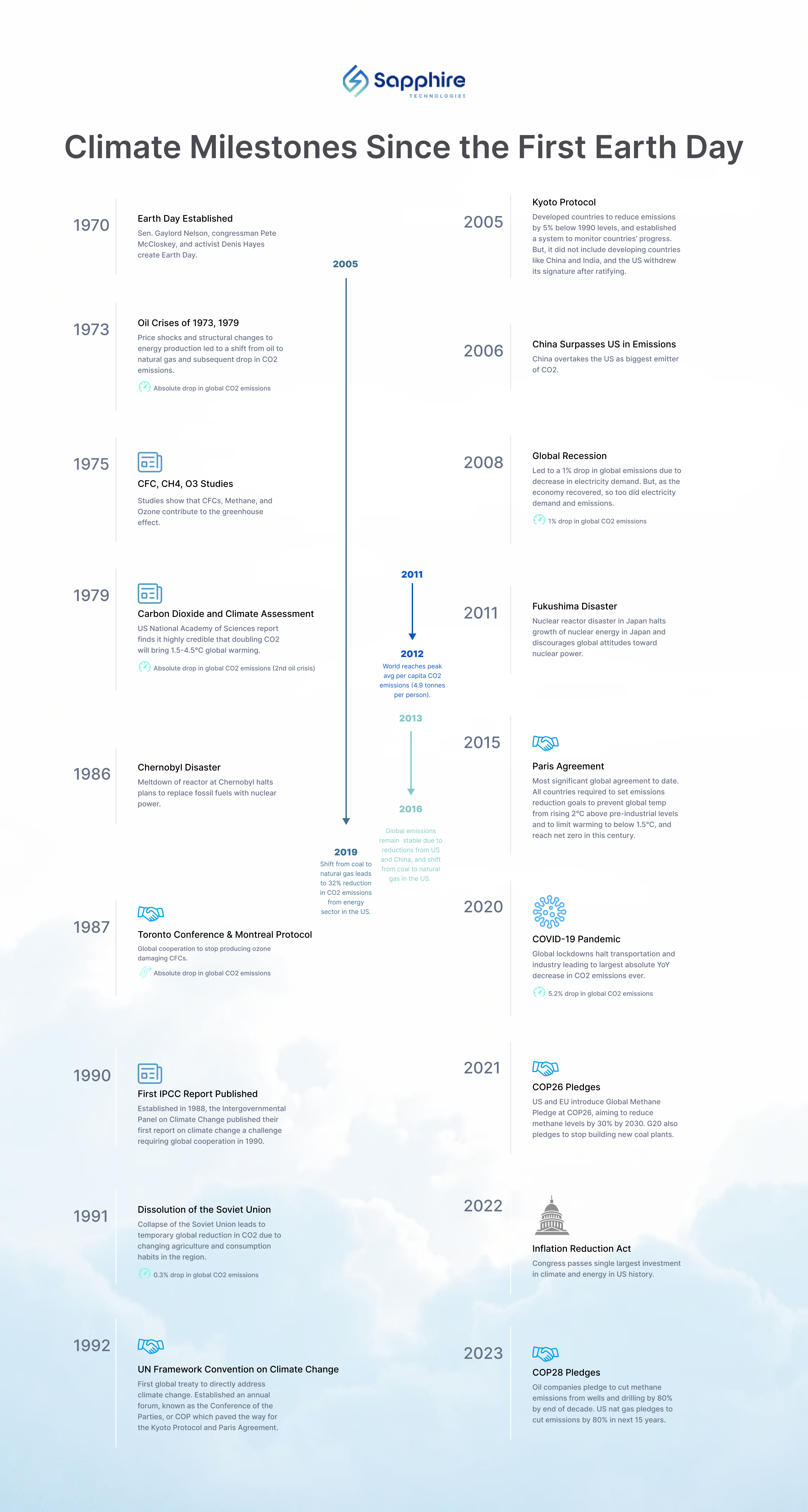Timeline of Climate Milestones Since the First Earth Day 1970
April 22, 2024
In honor of Earth Day 2024, we’ve put together a timeline of key milestones in climate science, policy, and events since the establishment of Earth Day in 1970. While this is by no means a comprehensive timeline, it does illuminate several important takeaways in the fight against climate change.

1. Some of the most significant short-term reductions in global CO2 emissions have been a result of circumstances unrelated to intentional climate action – but they still provide valuable insight.
For example, oil crises in 1973 and 1979 led to a reduction of reliance on oil and began a shift to natural gas in the global energy mix that would pick up steam two decades later and result in substantial reductions in CO2 emissions from the energy sector. The collapse of the Soviet Union and resulting economic struggles in the region led to a substantial decrease in the amount of meat consumed – which in turn contributed to a 0.3% reduction in global emissions in 1991. The global COVID 19 pandemic led to the greatest decrease in global CO2 emissions ever seen in absolute terms as the transportation of people and goods massively slowed in 2020. These learnings also illustrate the power of individuals to impact climate change. While actions like reducing meat consumption, carpooling, and turning off the lights may seem inconsequential on a small scale – on a large scale or even global scale these actions have been proven to lead to absolute reductions in CO2 emissions.
2. Commitments to climate action by countries trail climate science… substantially.
As early as 1976, studies showed that methane has a harmful impact on the greenhouse effect. However, the first commitments to methane reduction on the global stage didn’t occur until 2021 when the US and EU introduced a Global Methane Pledge aiming to slash global methane emissions by 30% by 2030. At COP28 in 2023, oil companies pledged to cut methane emissions from wells and drilling by 80% before 2030, while the US pledged to reduce methane emissions by 80% in the next 15 years.
3. Natural gas has made a meaningful impact on reducing US emissions and will continue to play an important role in helping the world reach climate milestones in the future.
From 2005-2019 the shift from coal to natural gas led to a 32% reduction in CO2 emissions from energy sector in the US. Today, natural gas is the largest source of US power – and continues to have an important role to play in helping reach our climate goals while ensuring secure energy supply in the US and abroad. While much work remains, including reducing methane emissions by 80% in the next 15 years, natural gas will help us reach climate milestones into the future.








